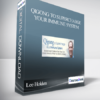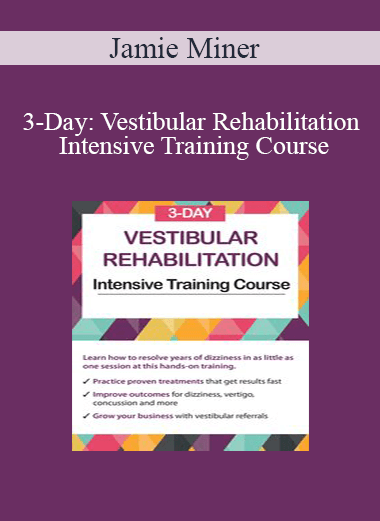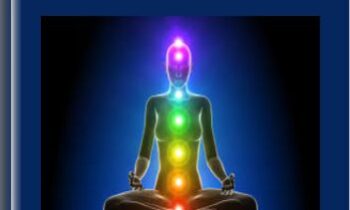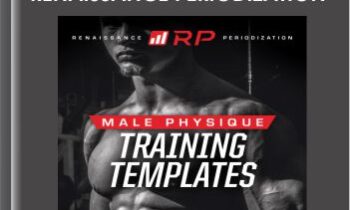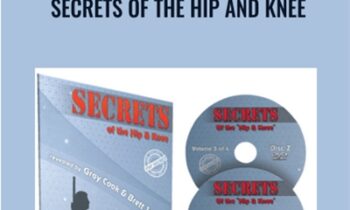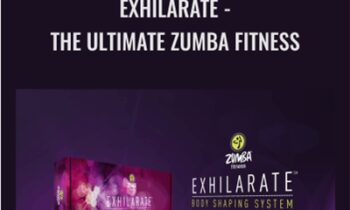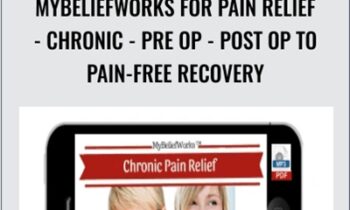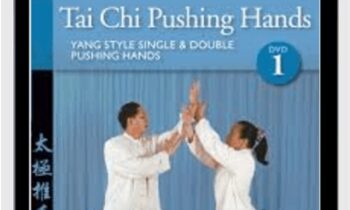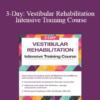$599.99 Original price was: $599.99.$108.00Current price is: $108.00.
 Purchase this course you will earn 108 Points worth of $10.80
Purchase this course you will earn 108 Points worth of $10.80Elevate your skills with the Jamie Miner – 3-Day: Vestibular Rehabilitation Intensive Training Course course, available for just $599.99 Original price was: $599.99.$108.00Current price is: $108.00. on Utralist.com! Browse our curated selection of over 60,000 downloadable digital courses across diverse Health and Medical. Benefit from expert-led, self-paced instruction and save over 80%. Start learning smarter today!
Salepage link: At HERE. Archive:
Total sizes: – include:
- Faculty:
- Jamie Miner
- Duration:
- 17 Hours 28 Minutes
- Format:
- Audio and Video
- Copyright:
- Dec 09, 2019
Description
| Manual – Vestibular Rehabilitation (12.17 MB) | 206 Pages | Available after Purchase | |
| Appendix – Vestibular Rehabilitation (3.56 MB) | 54 Pages | Available after Purchase |
Outline
Hot Topics and Innovations in Treatment of Dizziness, Vertigo, and Vestibular Disorders
- How your patients can benefit from cutting edge research
HANDS-ON LAB: Upgrade Your Assessment and Clinical Reasoning Skills
- Get to the root cause of impairments faster with today’s best tests and evaluations for:
- Dizziness
- Pain
- Lightheadedness
- Sleeplessness
- Gait disturbances
- Visual hallucinations
- Drop attacks
- Double vision
- Oscillopsia
- Tinnitus
- Motion sensitivity
- Gaze stability
- Balance
HANDS-ON LAB: Revolutionize Your Rehab Toolbox for Dizziness, Vertigo, And Vestibular Disorders
- Practice effective techniques you can use immediately to:
- End years of vertigo and dizziness in as little as one session
- Significantly improve functional mobility and stability
- Manage concussion symptoms more effectively
- Return athletes to sport faster
- Prevent falls
- Improve balance and gait
- Restore gaze stability and focus
- Reduce migraines, neck pain, nausea, anxiety, and other related symptoms
HANDS-ON LAB: Combine Techniques More Effectively for Better Outcomes
- Practice integrating:
- Epley maneuver and variations
- Head thrust technique
- Brandt-Daroff exercises
- Roll technique
- BBQ roll
- Liberatory maneuver
- Ocular motor assessment
- Vestibular ocular reflex/gaze stabilization treatments
- Saccade exercises
- Optokinetic treatments
- Subjective visual vertical assessment
- Progressive advancement of visual motion
- Treatment for exertional intolerance
- Smooth pursuit neck torsion test
- Joint mobility for cervicogenic dizziness
HANDS-ON LAB: Design Advanced, Innovative Plans of Care for Your Patients
- Practice developing comprehensive treatment strategies for common impairments, including:
- Cervicogenic dizziness
- Concussion
- Benign paroxysmal positional vertigo (BPPV)
- Vestibular hypofunction
- Vestibular neuronitis
- Vestibular migraine
- Labyrinthitis
- Meniere’s disease
- Acoustic neuroma
CASE STUDIES: Put Knowledge to Practice
- Case study 1: Correctly identify the root cause of impairment
- Case study 2: Differentiate cervicogenic dizziness, BPPV and vestibular hypofunction
- Case study 3: Problem solve a complex case of vestibular hypofunction
- Case study 4: Develop an effective treatment plan for Meniere’s
- Case study 5: Navigate pharmacological side effects and comorbidities
- Case study 6: Accurately measure patient outcomes
- Case study 7: Overcome barriers to strategy implementation
Maximize Your Reimbursement
- Coding and billing updates
- Justify rehab with the right progress measures
- Avoid denials and audits with these tips
Faculty

Jamie Miner, PT, DPT, GCS Related seminars and products: 9
Jamie Miner, PT, DPT, GCS, provides specialized services to many SNFs. She has experience in home health, acute care, outpatient vestibular rehab and fall prevention, acute rehab, sub-acute rehab, and long-term care. Additionally, she serves as a clinical instructor to many doctoral physical therapy students and as an adjunct professor at Shenandoah University and Campbell University. Jamie graduated with a BS degree in PT from UNC Chapel Hill, a DPT from Shenandoah University and earned her vestibular certification at Emory University in March 2003.
Speaker Disclosures:
Financial: Jamie Miner has an employment relationship with Rehabcare, Galloway Ridge Facility. She is an Adjunct Associate Professor at Shenandoah University. Ms. Miner receives a speaking honorarium from PESI, Inc.
Non-financial: Jamie Miner has no relevant non-financial relationship to disclose.
Cultivate continuous growth with the Jamie Miner – 3-Day: Vestibular Rehabilitation Intensive Training Course course at Utralist.com! Unlock lifetime access to premium digital content, meticulously designed for both career advancement and personal enrichment.
- Lifetime Access: Enjoy limitless access to your purchased courses.
- Exceptional Value: Benefit from savings up to 80% on high-quality courses.
- Secure Transactions: Your payments are always safe and protected.
- Practical Application: Gain real-world skills applicable to your goals.
- Instant Accessibility: Begin your learning journey immediately after buying.
- Device Compatible: Access your courses seamlessly on any device.
Transform your potential with Utralist.com!
| Status |
|---|
Related products
Health and Medical
‘Quantum’ Chakra Clearing and Balancing Series – Jonette Crowley
= 52 Points
Health and Medical
“Male Physique Training Templates” – Renaissance Periodization
= 42 Points
Health and Medical
= 28 Points
Health and Medical
= 18 Points
Health and Medical
MyBeliefworks for Pain Relief, Chronic, Pre Op/Post Op to Pain-free Recovery – Jimmy Mack
= 25 Points
Health and Medical
CDT Dental Coding and Reimbursement Update: Identifying Common Practice Mistakes – Paul Bornstein
= 85 Points
Health and Medical
The Heart of Complex Cardiac Care: Strategies for Rapid Action – Marcia Gamaly, Robin Gilbert
= 85 Points
Health and Medical
= 28 Points


